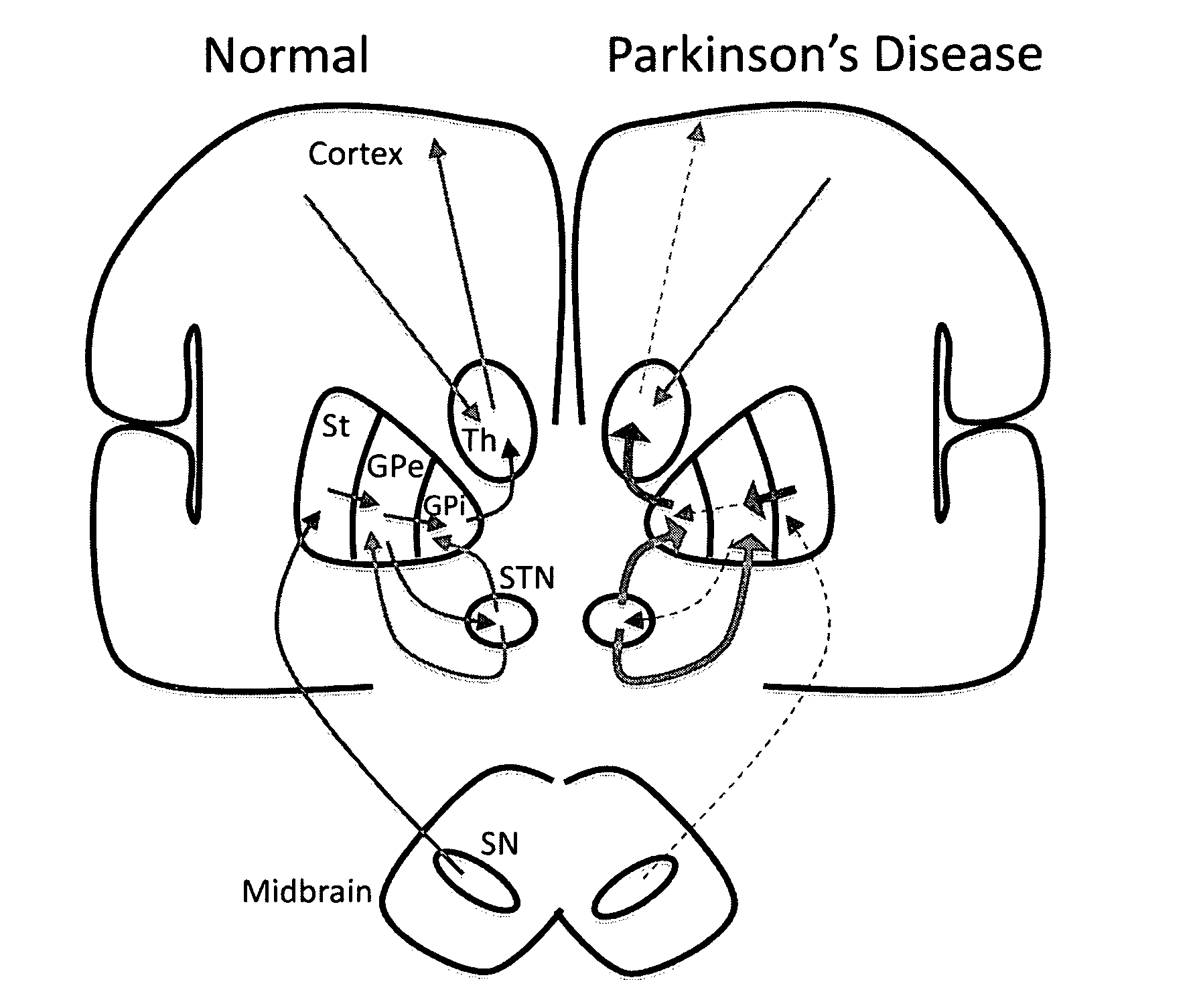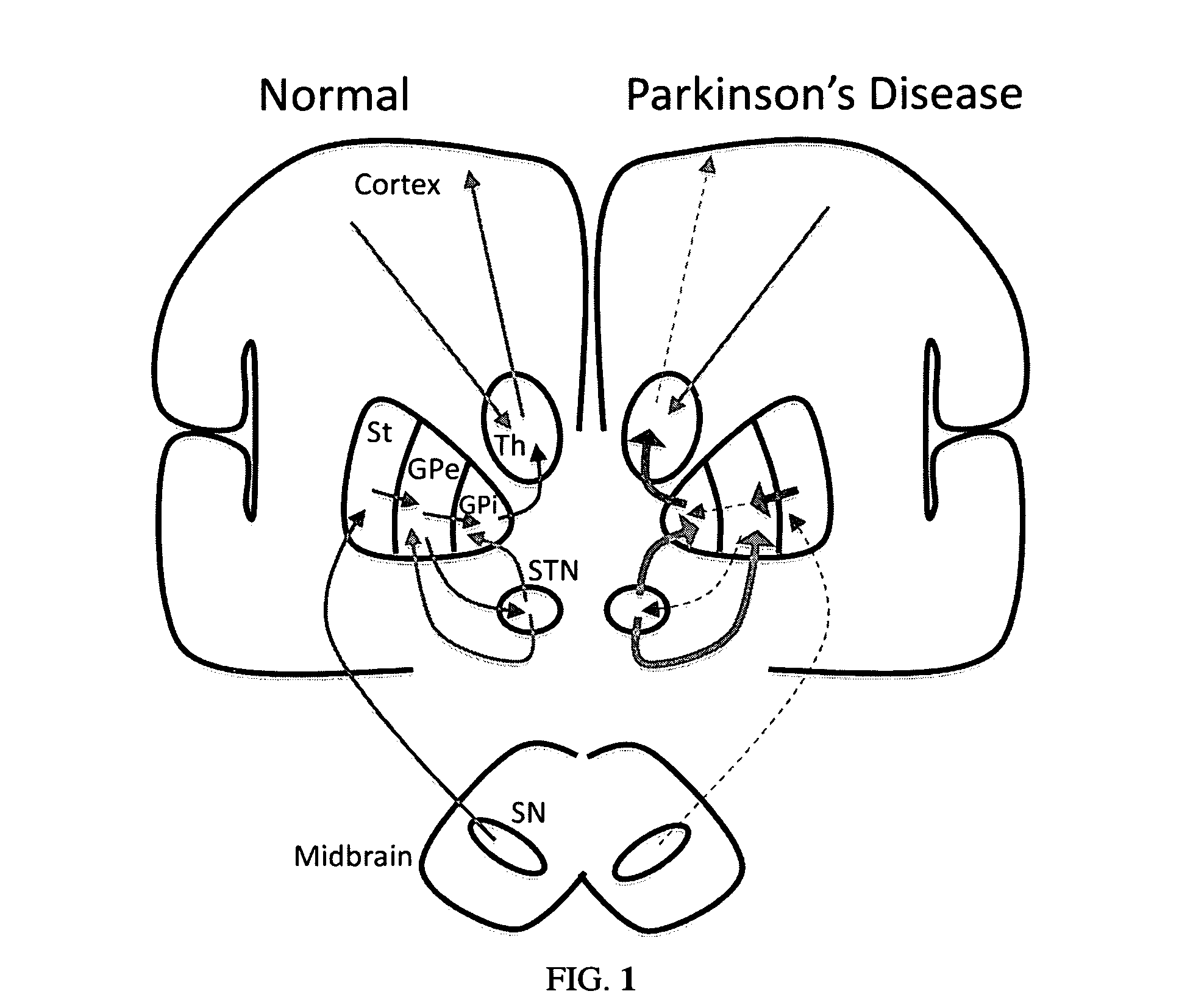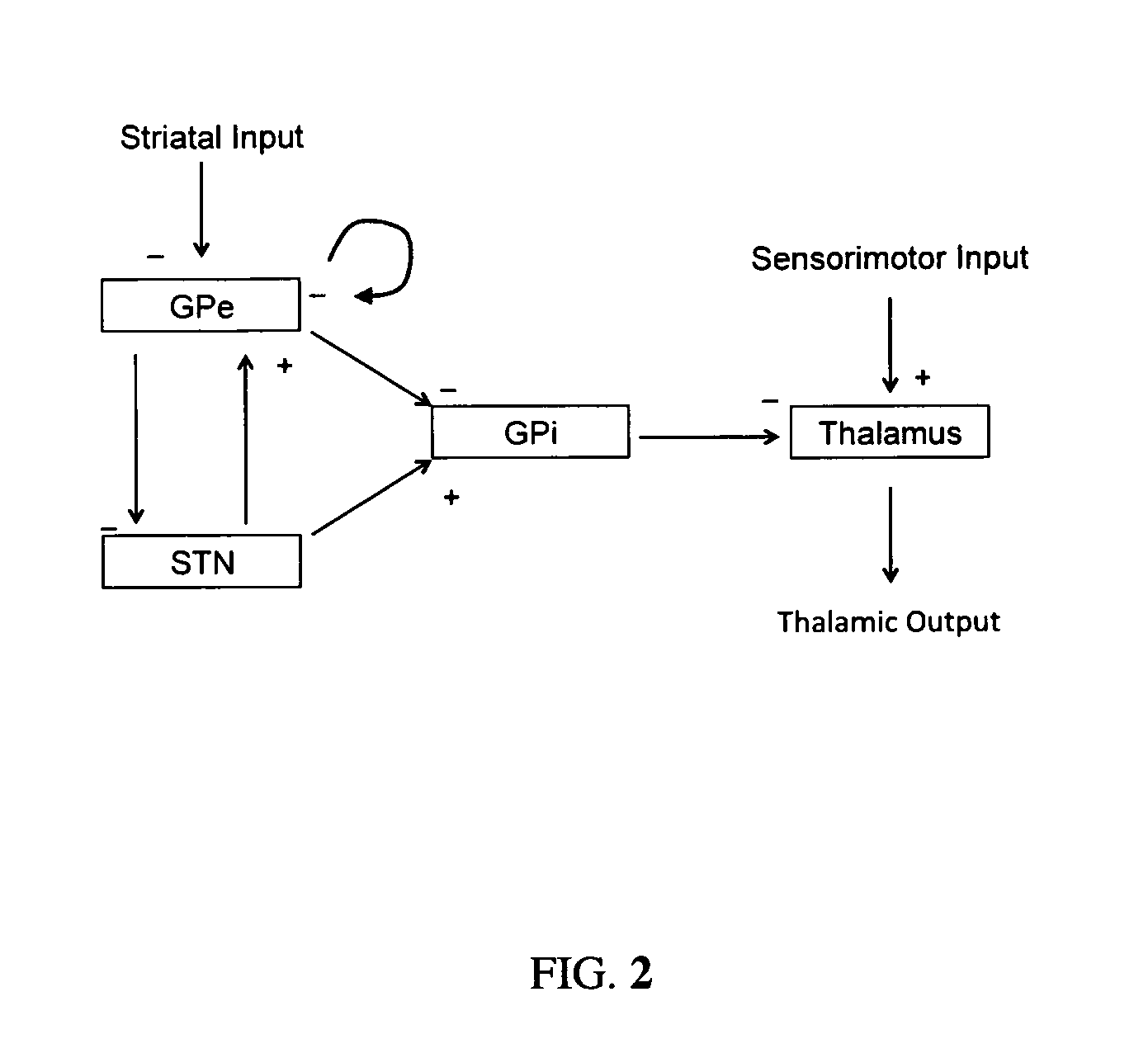Model based control of Parkinson's disease
a model-based control and parkinson's disease technology, applied in the field of model-based control of parkinson's disease, can solve the problem that prior art has not envisioned such fundamental features as necessary components of model-based brains
- Summary
- Abstract
- Description
- Claims
- Application Information
AI Technical Summary
Benefits of technology
Problems solved by technology
Method used
Image
Examples
Embodiment Construction
[0169]This device is a fusion of a fundamental computational model that embodies the biology and physics of part of the brain, with a nonlinear control framework that consists of a data assimilation front end filter, and a specified control law. The control laws employed are typical prior art proportional-integral-differential, or variable state or sliding mode control laws. The novel part of this invention is the use of a fundamental model to observe, reconstruct, and track brain activity.
[0170]For use in Parkinson's disease, the fundamental model will model the structures of the brain relevant to the control of signs and symptoms of the disease, including the structures illustrated in FIG. 2 such as subthalamic nucleus, globus pallidus (interna and externa), striatum (putamen and caudata nuclei), thalamus, cortex, cerebellum, and other structures as needed to represent relevant activity.
[0171]For use in Parkinson's disease, the fundamental model will incorporate compartmental comp...
PUM
 Login to View More
Login to View More Abstract
Description
Claims
Application Information
 Login to View More
Login to View More - R&D
- Intellectual Property
- Life Sciences
- Materials
- Tech Scout
- Unparalleled Data Quality
- Higher Quality Content
- 60% Fewer Hallucinations
Browse by: Latest US Patents, China's latest patents, Technical Efficacy Thesaurus, Application Domain, Technology Topic, Popular Technical Reports.
© 2025 PatSnap. All rights reserved.Legal|Privacy policy|Modern Slavery Act Transparency Statement|Sitemap|About US| Contact US: help@patsnap.com



